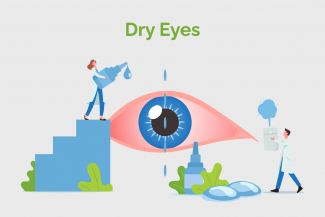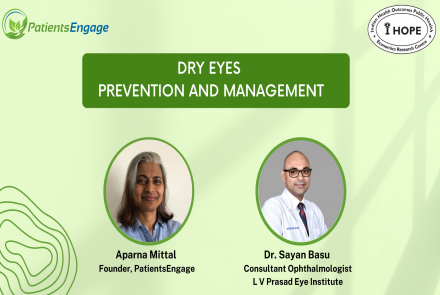
Information about Dry Eyes provided by Dr. Ankita Daftary, Opthalmologist, Mumbai
What is dry eye disease:
It is an extremely common and often unrecognised disease affecting millions of people. It is a multifactorial disease of the tears and ocular surface that results in symptoms of discomfort, visual disturbance and tear film instability with potential damage to ocular surface. It is accompanied by increased osmolality of the tear film and inflammation of ocular surface.
Dry eye disease is a growing public health problem and one of the most common conditions seen by eye practitioners.
For more information on Dry Eyes, listen to our video discussion here
Understanding tear film and its function:
The lacrimal system produces a tear film that allows the ocular surface to function normally. The tear film is three layered. Outermost is a lipid layer mainly secreted by Meibomian glands. This layer retards the evaporation of the aqueous layer and enhances the tear film stability. Below this is the aqueous layer which is secreted by the lacrimal glands and is responsible for transport of nutrients. The inner most layer is the mucin layer which forms a highly hydrophilic wetting surface over the hydrophobic epithelial cell membrane of cornea. It reduces the surface tension between the lipid and aqueous layer, thus contributing to the stability of the tear film.
Normally, a person blinks averagely 10 to 15 times per minute, that is, between each blink there is an interval of 2-10 seconds. The blink compresses the superficial lipid layer, the mucous layer acts as a scavenger to pick up any debris and carries it to the fornices. As the eye lid reopens, a new tear film layer is spread across the ocular surface.
Excess of tears are drained by lacrimal canaliculi via nasolacrimal duct over nasopharynx and oropharynx to be swallowed.
It can be summarised that the dysfunction of any component of lacrimal function unit can result in unstable tear film with altered tear film composition, ocular discomfort and ocular surface disease. The end result is, ocular surface inflammation starting a vicious cycle of dryness and more inflammation.

















